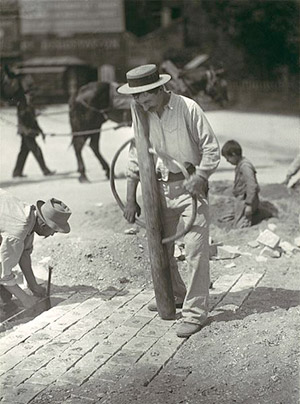Eugene Atget
Eugène Atget made his first photographs in 1887 at the age of 30 having previously worked as an actor and artist.
Around 1906 Atget began to photograph Paris systematically in an attempt to document the remaining pre-revolutionary streets, buildings and customs before they disappeared.
Atget supplemented commissions by museums and libraries with photographic studies of landscapes, monuments, flowers and animals made to sell to artists. His clients included Picasso, Matisse, Degas and Marcel Duchamp with several of their canvases clearly being based upon Atget’s photos.
Working with a large-format wooden bellows camera, documenting the city’s architecture while including the context of the narrow streets of the quartiers.
While his architectural photography benefited from the camera movements available on his bellows camera (to control perspective and convergence) he also used it for his ‘street photography’, eschewing later more portable models when they became available.
His images of la vie dans la rue rank amongst the finest examples of street photography, an incredible achievement considering the equipment he had at his disposal and the incredibly ‘slow’ glass plates that he used.
Atget printed his own images in daylight without an enlarger, for this reason, all of his output was contact prints of the same size as the glass plates.
